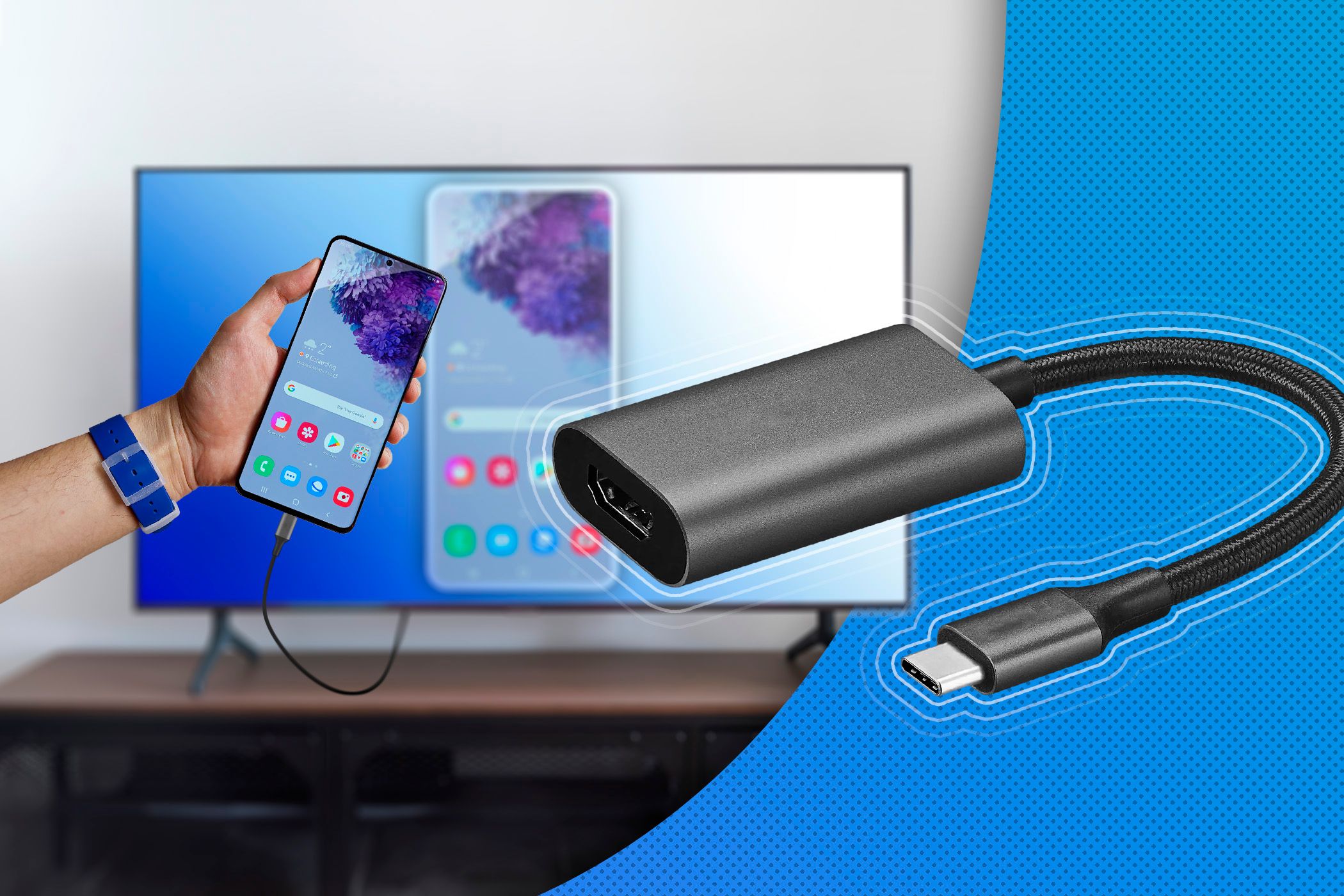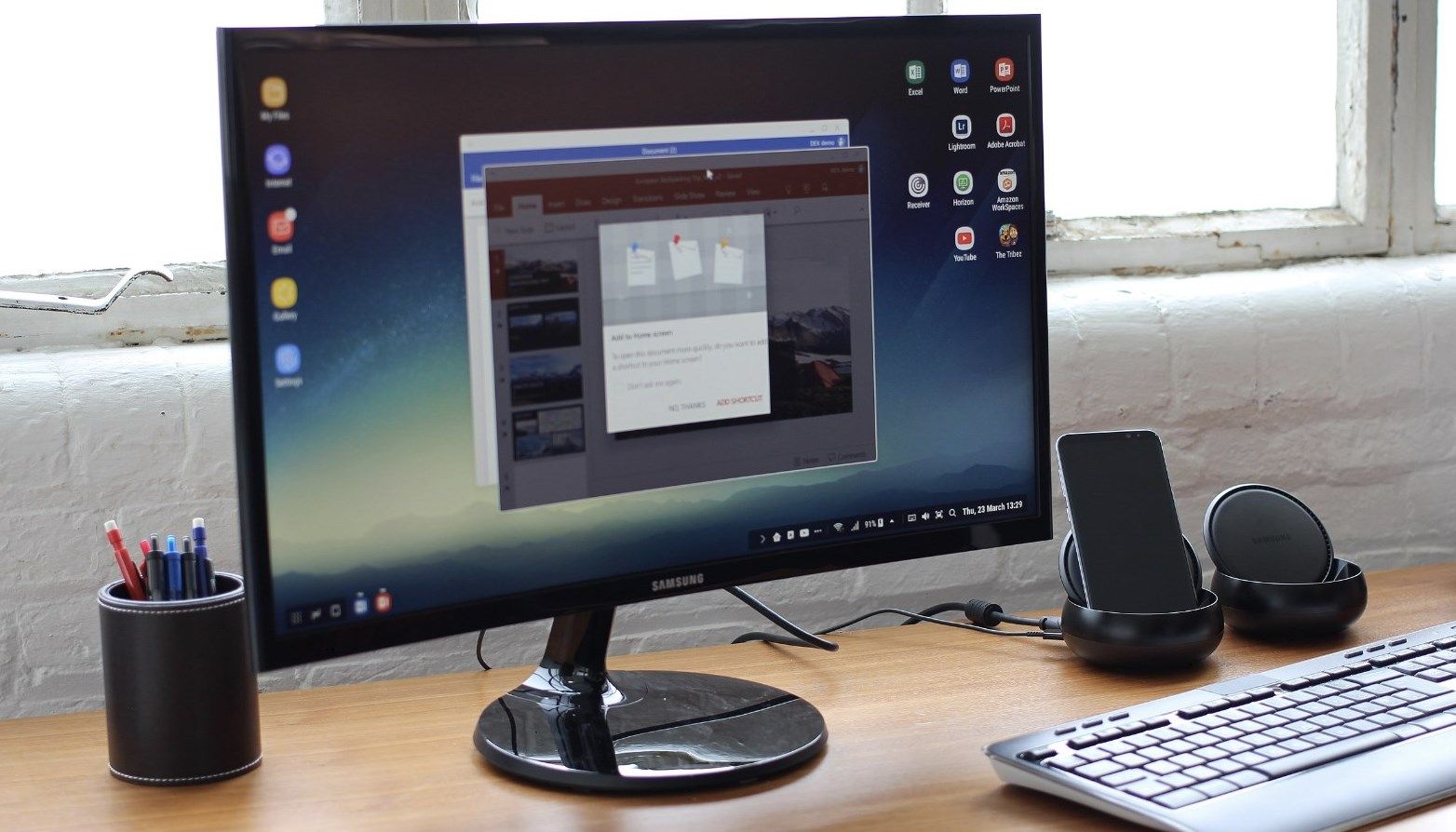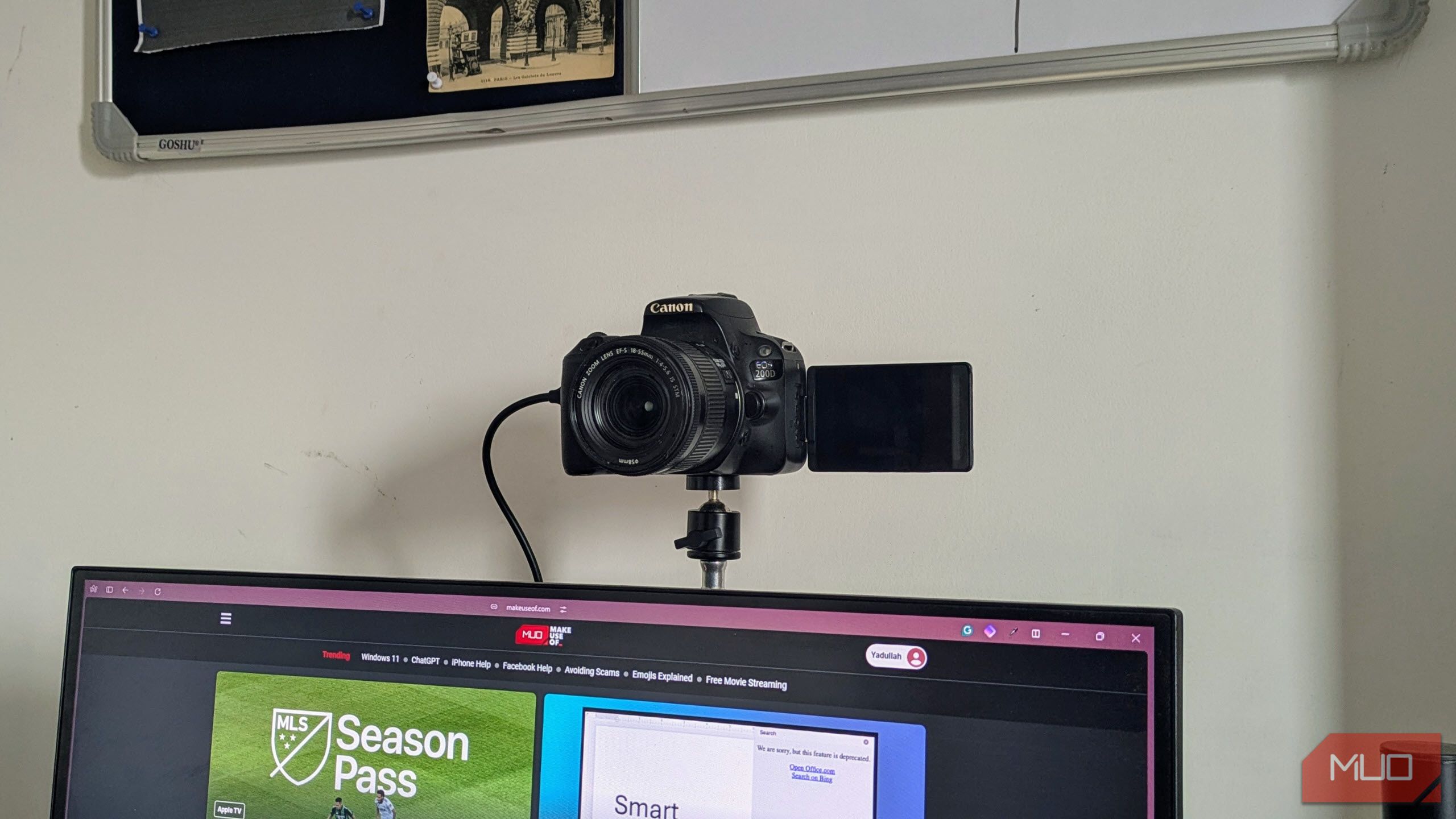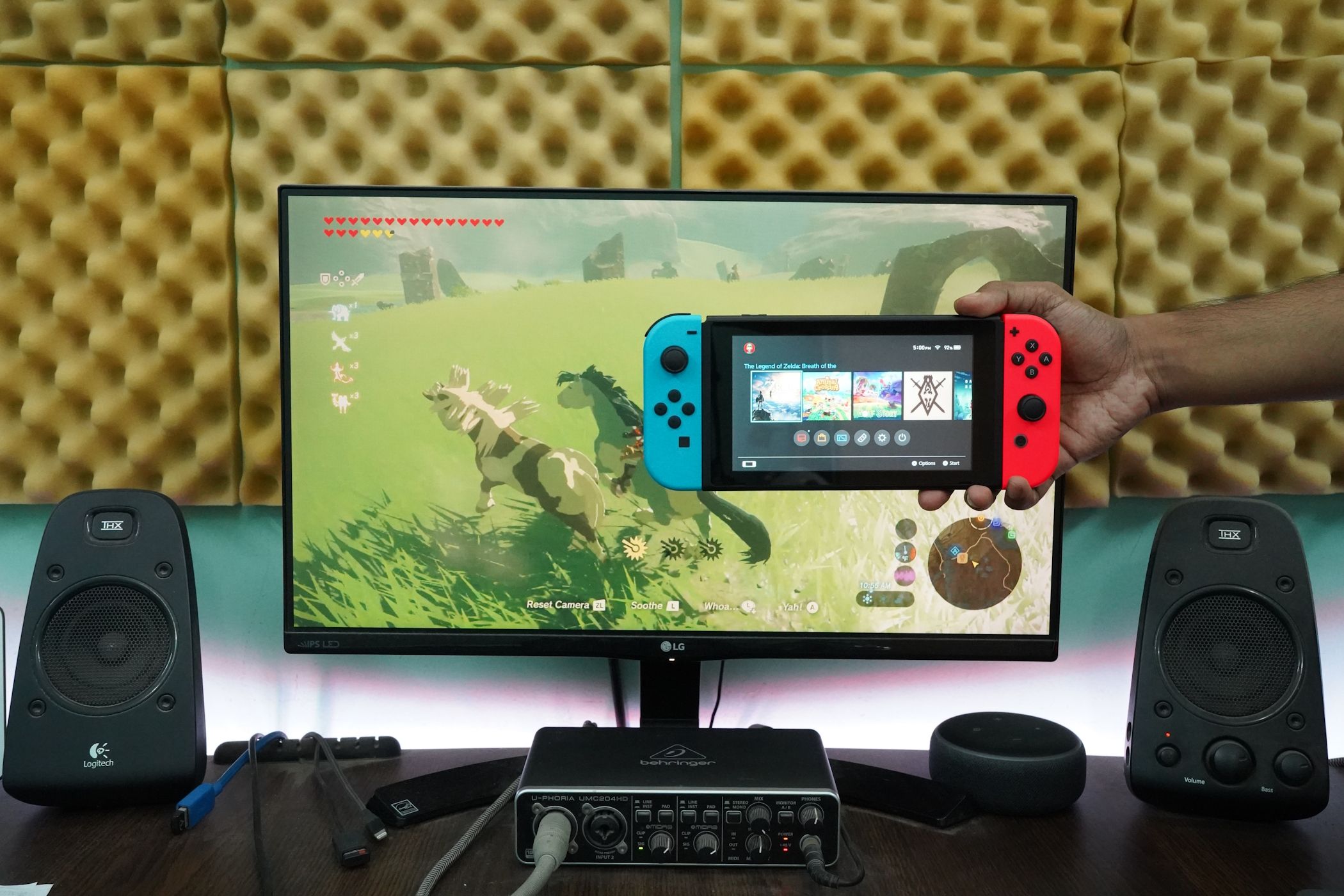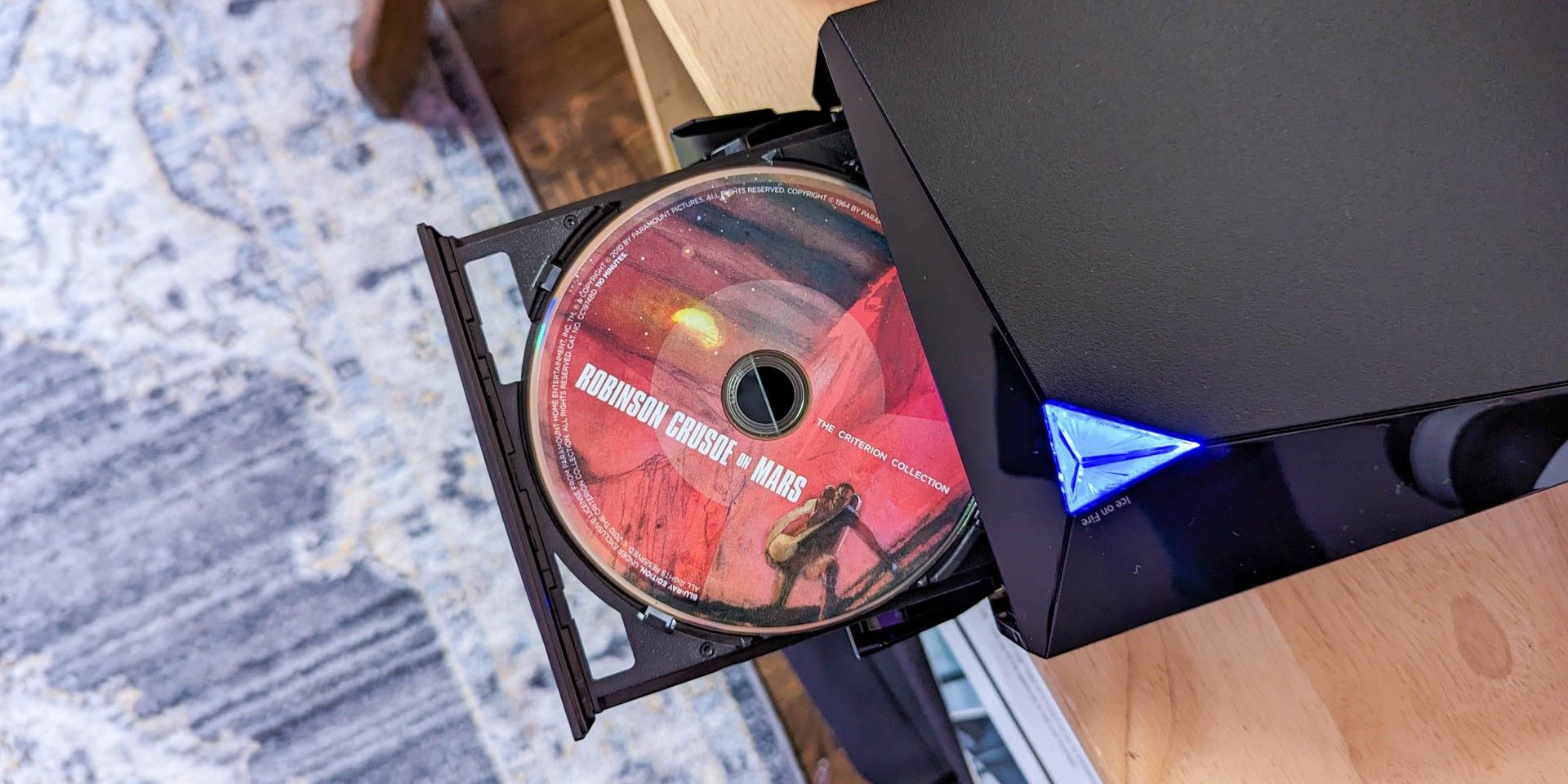When you think of a monitor, you probably picture it connected to a PC or laptop. However, that screen can actually work with a wide range of other devices, including smartphones, gaming consoles, streaming sticks, and media players—you just need to know where to start.
7
Mirror Phone Display
Your smartphone isn’t all that different from a computer. Just like you can connect a PC or laptop to a monitor, you can do the same with your Android device or iPhone, too.
For most phones, all you need is a USB-C to HDMI adapter. Once you plug it in, your phone’s screen will show up on the monitor almost instantly. If you have an old iPhone, you can get the same effect using Apple’s Lightning Digital AV Adapter. It connects to your iPhone’s charging port and provides an HDMI output for the monitor.
Not all Android phones support HDMI Alt Mode, so it’s best to check your phone’s specs before picking up a cable.
The best thing about using a wired connection is how smooth everything feels. There’s virtually no lag, so you can watch videos, edit documents, or even play games without any annoying delays. You can also connect a Bluetooth keyboard and mouse to your phone for a more PC-like experience.
6
Samsung DeX
If you’ve got a Samsung Galaxy phone or tablet that supports DeX, you don’t have to settle for simply mirroring the screen. Samsung DeX lets you connect your device to a monitor and switches the interface to a desktop-style layout. You’ll get a taskbar, app shortcuts, drag-and-drop file support, and the ability to run multiple apps in resizable windows.
The easiest way to use Samsung DeX is with a USB-C to HDMI cable. Plug your phone into the monitor, and you should see a notification prompting you to launch Samsung DeX. Tap it, or enable DeX manually from the Quick Settings menu, and you’re all set. If you’re using a Samsung Smart Monitor, you can skip the cables entirely and connect wirelessly.
Your Samsung phone becomes the brain of the setup, and its screen can double as a touchpad and keyboard. For a more comfortable experience, you can also pair a Bluetooth mouse and keyboard. If you’ve ever thought about replacing your computer with your phone, this is about as close as it gets.
Samsung DeX is only available on high-end Galaxy phones, such as the S9 and newer models, as well as tablets in the Tab S4, S5e, S6, S7, and S8 series.
5
Use It as a Live Camera Monitor
If you’re into photography or content creation, you can also use your monitor as a live camera display. Your camera might have a built-in screen, but it isn’t always possible to rely on it while you’re recording. This is especially true when you’re filming solo.
Most cameras support HDMI output, allowing you to connect them directly to a monitor using an HDMI cable. In most cases, you’ll need either a micro or mini HDMI to HDMI cable, depending on your camera’s port. Once connected, your monitor will display a real-time video feed.
This setup is especially handy for filming YouTube videos, recording tutorials, or checking your shot during livestreams. With a full-sized screen in front of you, it’s much easier to adjust your framing, monitor lighting, and keep focus sharp.
4
Streaming Stick
Even if you’ve got a top-of-the-line 4K monitor, it can’t stream Netflix, YouTube, or Disney+ out of the box. That’s because most monitors don’t come with built-in apps, tuners, or Wi-Fi like a smart TV. The easiest way to work around that is by using a streaming stick.
Devices like the Amazon Fire Stick, Roku, or Apple TV are compact, affordable, and incredibly easy to use. You only need to plug the stick into your monitor’s HDMI port, hook up a power source (usually via USB), and connect it to your Wi-Fi. Suddenly, your plain old monitor transforms into a smart entertainment hub.
You can control everything with a remote, just like a smart TV. The only drawback with this setup is that most monitors don’t have built-in speakers, and if they do, the sound quality is usually underwhelming. For better audio, you’ll have to use external speakers or pair Bluetooth headphones.
3
Gaming Console
You don’t necessarily need to buy a streaming device if you already have a console like the PlayStation 5, Xbox Series X, or even the Nintendo Switch. Sure, these devices are built for gaming first, but they also work great as media centers.
You can stream your favorite shows and movies on Netflix, YouTube, Disney+, and other apps directly from the console. Some even offer web browsing, though the experience can be clunky. If you’re using a PS5, picking up the optional Media Remote makes it feel a lot like using a smart TV.
But it’s not just about streaming. Playing on a monitor has real advantages over a traditional TV. Monitors typically have lower input lag, so your button presses and joystick movements register more quickly. That’s a big advantage in fast-paced games where every millisecond matters. And since you’re sitting closer, everything from cutscenes to sniper shots feels more immersive.
If you’ve got a portable monitor, the possibilities get even more exciting. You can set up your console almost anywhere—a hotel room, the kitchen counter, or even the backyard if you’re feeling bold.
2
DVD or Blu-ray Players
DVD or Blu-ray players aren’t as popular as they once were, but if you have one lying around, you can pair it with your monitor to create a mini home theater. Most players come with HDMI outputs, so all you need is an HDMI cable to connect the two, and you’re good to go.
If your monitor doesn’t have built-in speakers (which many don’t), you’ll want to connect external speakers to the player’s audio-out port for the best sound experience.
This kind of setup is perfect for smaller spaces like bedrooms, dorm rooms, or home offices where a large TV might feel like overkill. And if you’ve got a stack of old discs collecting dust, this is the perfect excuse to dust them off and enjoy a little movie night nostalgia.
1
Connect a Security Camera or DVR System
If your monitor isn’t cutting it for high-end gaming or binge-watching shows, it can still shine as part of your home security setup. You can connect it to a security camera or a DVR (Digital Video Recorder) system and turn it into a dedicated surveillance display. Most DVR systems offer HDMI or VGA outputs, so you won’t have to deal with any complicated setup.
This is especially useful for monitoring entryways, garages, or any area where you want a constant video feed without relying on mobile apps or cloud services. It’s also far more convenient than pulling out your phone and waiting for an app to load. With a direct connection to your security system, your monitor provides instant, always-on visibility.
A monitor is often best paired with a PC, but you’re not without options. You can use it for gaming, streaming, or even as a second screen for your phone or tablet. There are plenty of clever ways to make the most of your monitor.
With the right accessories, it can become a dedicated console display, a smart TV alternative, or even a productivity hub for your mobile devices. However you use it, your monitor has far more potential than simply displaying Windows or macOS.
